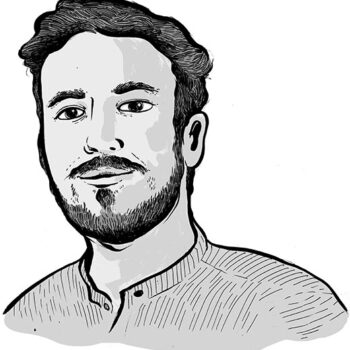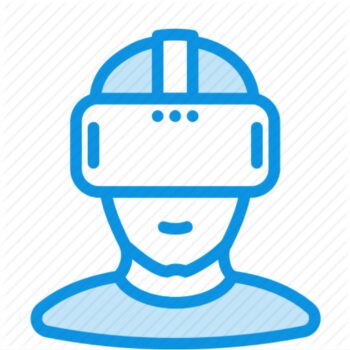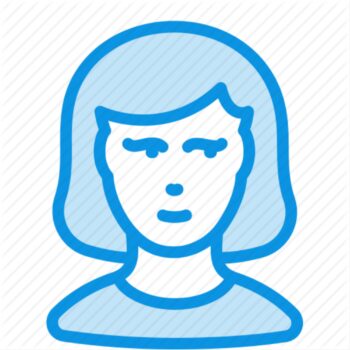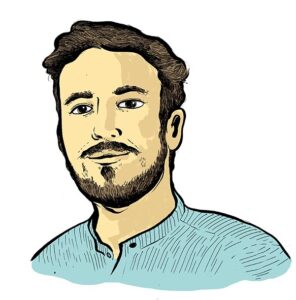Messenger
The Messenger enables project teams to work efficiently with suppliers worldwide. As the Lead designer, I was responsible for establishing the research and design approach, helping stakeholders familiarise themselves with human-centred design, defining business goals, and coordinating the work of the in-house design team. The Messenger was launched in 2022, improving efficiency and user satisfaction.
This image has been partially blurred for reasons of confidentiality.
How can a global renewable energy company improve its services to enhance collaboration with suppliers and scale energy production?

Problem. Green Energy Company, a global renewable energy company operating in 21 countries, is committed to increasing its energy production capacity to lead the shift to a decarbonised society. The company is undertaking a comprehensive digital transformation to enhance productivity and global project management capabilities with suppliers to achieve this.
Approach. The design operations were firmly rooted in an end-to-end agile approach to support the digital transformation effort. As the lead service designer and researcher, I was responsible for establishing the research and design approach, helping stakeholders familiarise themselves with human-centred design, defining business goals, and coordinating the work of the in-house design team. Working closely with stakeholders, developers, and designers, I helped the company design, test, and deliver a new touchpoint for suppliers.
Solution. The Messenger enabled the company to work efficiently with suppliers worldwide, saving operational time and improving customer satisfaction and accessibility. In addition to planning and delivering service design and research activities, I helped the growing in-house team to structure its activities better and raise awareness among senior managers about the potential of design.
A Quick Heads Up: The name ‘Green Energy Company’ is a cover, all in the name of an NDA. So, as you read through, know that these opinions are all mine.
Responsibilities
Activities
Project Details
Project highlights
Unified communication workflow across six distinct processes
Streamlined the management of both employee and supplier communications
Enhanced communication tracking, reducing the need for external channels
Design highlights
Design improvements addressed during the re-design process extended to the following areas:
Team and stakeholders
Collaborative Success: The achievement of this project was a synergistic effort, relying on contributions from various team members and departments. Alessandra and Michele were integral collaborators throughout the design process. Antonio and Pierpaolo served as key stakeholders, offering essential support and instilling trust that greatly facilitated our design operations. In addition, the Business and Contract Management units were invaluable during the research and validation phases. Finally, the Agile and Scrum teams demonstrated flexibility and openness by incorporating our design needs into the existing backlog, notwithstanding some initial differences.
Design Team
Milan and Rome, Italy, (IT) • 4 team members
Green Energy Team | Stakeholders
Rome, Italy, (IT) • 3 team members
Green Energy Team | Agile Development Team
Rome, Italy, (IT) • 8 team members
Issues and approach
Designing the Messenger from scratch involved identifying and addressing various issues related to research, ideation, and delivery phases. All these issues could only be resolved with the help of team members.
Integrating User Insights into Agile Development
Research phase
Issue
Facing user feedback challenges on a key supplier portal, the organization recognized an opportunity to enhance their digital experience but had limited in-house experience with user research.
As an external Lead Service Designer and Researcher, my role was to introduce a research-informed approach into the organization’s existing agile development cycle.
Approach
I collaborated with the internal design team to align research activities with the organization’s agile sprints. Together, we developed a robust but flexible research plan that was integrated into the existing development workflow.
The research phase was executed seamlessly within the agile process, delivering valuable insights that informed design decisions. This collaborative effort expanded the internal team’s capability and understanding of the value of research-based design.
Navigating Shifting Priorities: Streamlining Research Operations in Agile Environments
Research phase
Issue
Amidst the fast-paced environment at Green Energy Company, the design team frequent encountered a shift in priorities, affecting research planning, timely delivery, and stakeholder availability.
As the lead service designer and researcher, my objective was to steer the research operations effectively, offering data-driven design recommendations to guide subsequent ideation and delivery stages.
Approach
To navigate these challenges, I implemented a structured approach by creating a research Gantt chart which outlined not just the activities, but also the goals and resources needed. This transitioned our research phase into a streamlined design sprint, seamlessly integrating it into the project’s existing agile backlog.
The Gantt chart provided a transparent view of the research landscape, allowing me to proactively negotiate for necessary resources well in advance. This approach ensured that the research was both effective and aligned with the project’s agile methodologies.
Tackling Communication Fragmentation with Team Chat
Research phase
Issue
In the evolving landscape of Green Energy Company, effective communication is crucial. However, the teams and their suppliers were lost in a maze of emails, Teams, and WhatsApp, causing fatigue and reduced productivity.
As the lead service designer and researcher, my task was to identify the root causes of these disjointed communications. A thorough mapping of interactions showed that workflows were interrupted by scattered interactions.
Approach
To streamline this, we designed a flexible team chat feature within our new Messenger tool. This centralised communications for specific workflows, eliminating the need to switch between platforms.
We developed a Messenger tool which aims to be a singular touchpoint for multiple communication workflows. By centralising communication, we’re simplifying tracking and aiming for higher tool adoption in line with Green Energy Company’s digital transformation objectives.
Navigating Supplier Hesitance for Switching to New Tools
Research phase
Issue
In our efforts to streamline Green Energy Company’s supplier communications, we faced a substantial hurdle: suppliers were accustomed to their existing assortment of tools, creating a significant disincentive to switch.
As the lead service designer and researcher, my objective was to delve deep into the root causes behind this poor adoption rate and identify solutions that would seamlessly integrate into the suppliers’ existing workflow.
Approach
We made strategic adjustments to improve the tool’s adoptability. First, we enhanced email notifications to be more conspicuous, nudging suppliers to engage more with the Messenger. Second, we simplified tasks to make them naturally align with existing workflows. Lastly, we created a unique access point within the Messenger to replace disparate features that were scattered across multiple platforms.
The outcome has been promising; by keeping both structured and unstructured communications within this newly enhanced Messenger, we’re optimistic that the integrated chat feature will act as a catalyst for broader adoption.
Elevating Agile Collaboration Through Design Backlog
Delivery phase
Issue
While working closely with the in-house design team, I noticed a significant challenge: the team was struggling to systematically incorporate design tasks into the existing agile backlog. This disconnect served as a barrier to seamless communication and collaboration between the design and development teams.
My role encompassed not just leading service design and research activities but also uplifting the design team’s capabilities to tackle intricate projects while maintaining an agile methodology. I was tasked with breaking down the silos and smoothing the transition from design to development sprints.
Approach
To bridge the gap, I introduced a design Backlog approach. This was a well-structured framework that included detailed information about the UX for each project touchpoint. The goal was to arm the SCRUM team with comprehensive, actionable insights for more effective sprint planning. This would also reduce the dependency on the design team for on-the-spot support, allowing for a more streamlined workflow.
The introduction of the design backlog was a game-changer. Not only was it readily adopted by both the design and agile teams, but it also significantly enhanced cross-team communication. The result was a more efficient delivery phase, ensuring that the project stayed true to its research-informed roots while making optimum use of the design team’s capabilities.
Bridging the Design-Dev Gap trough the User Flow Canvas
Delivery phase
Issue
The agile delivery team had limited experience working with designers which often resulted in fragmented communication and frequent misunderstanding between the design and agile teams during the development phase.
To solve such an issue, tt was crucial to introduce tools and methods that would help the development team navigate the complexity of the prototype, be more autonomous, and enhance communication with the designers.
Approach









